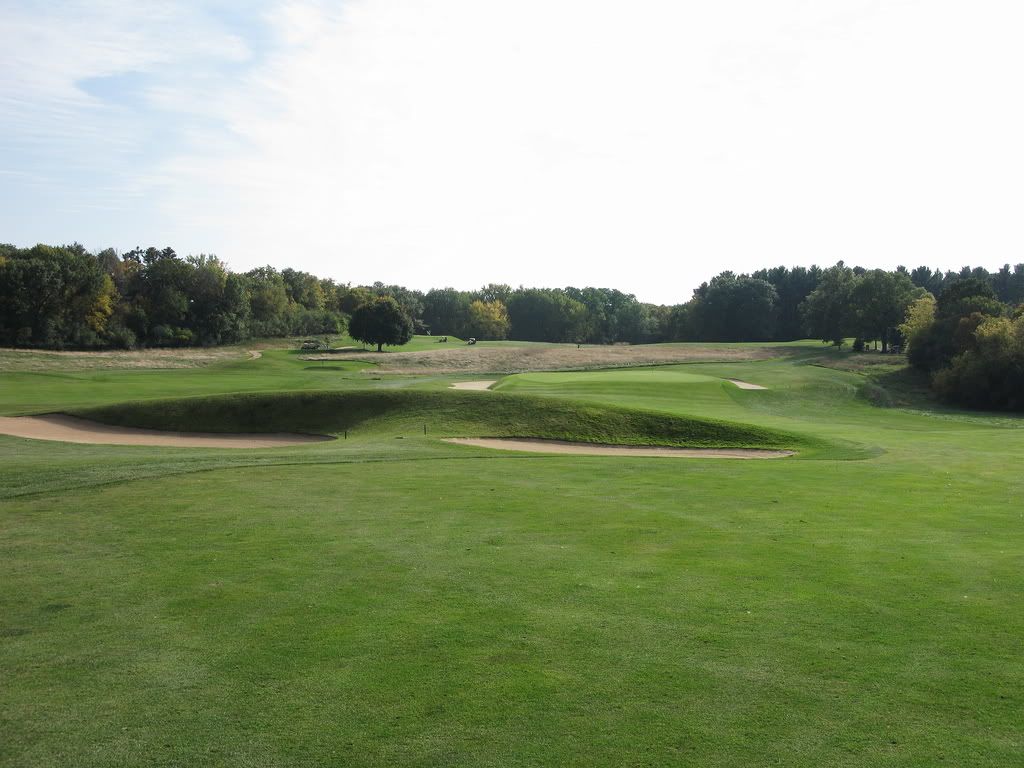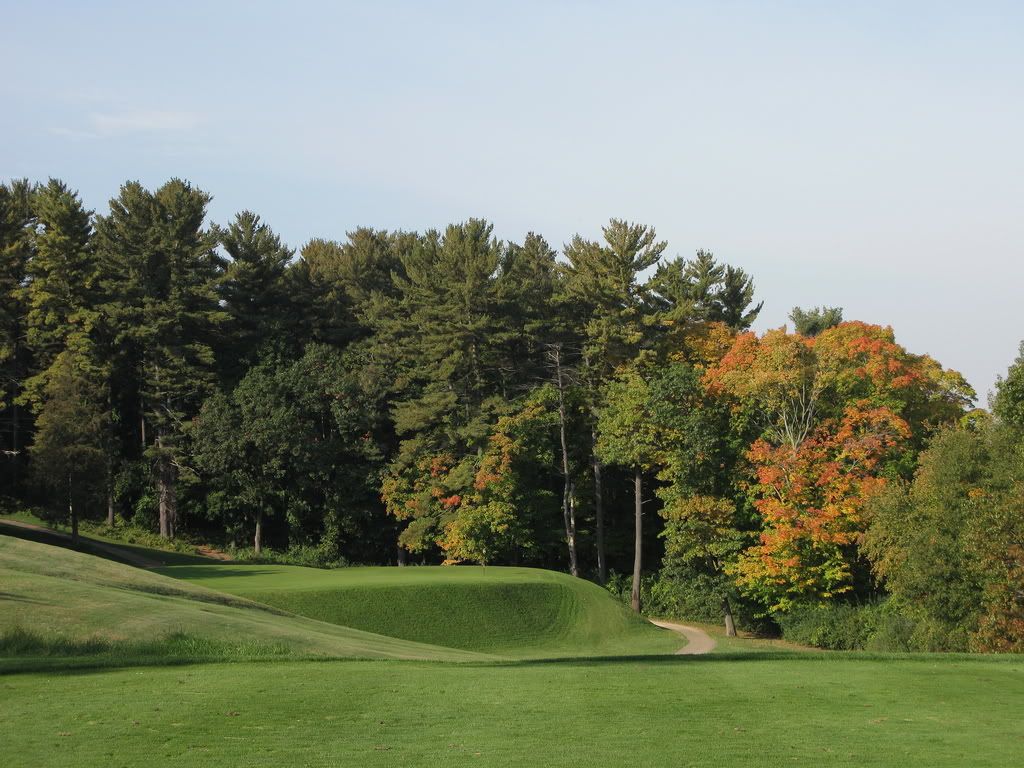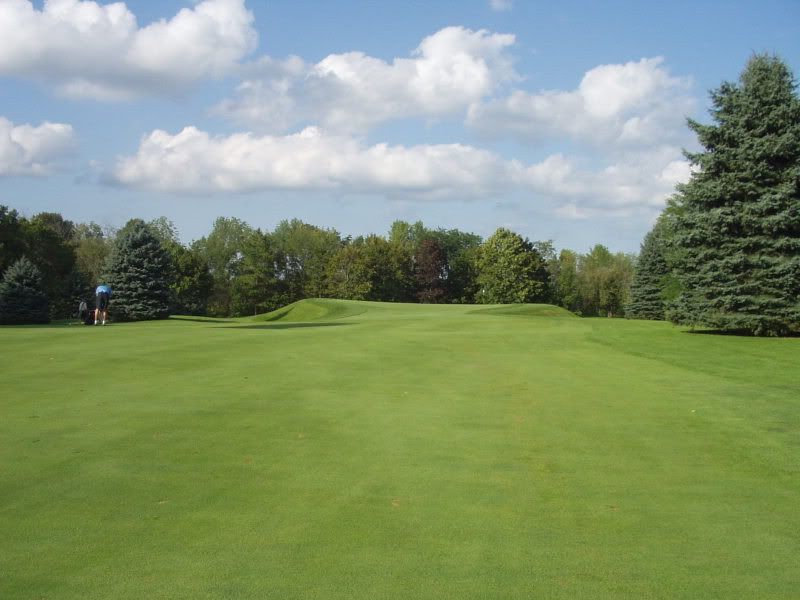In defense of the Langford look...
I don't want to give short shrift to the notion that how a given course plays -- as opposed to how it looks -- should be the most important consideration in remodeling/renovation efforts of the sort Mike is looking for at West Bend. But I also think it's important to consider how a Langford course looks, and for this the guiding model has to be Lawsonia.
Lawsonia just looks different than most courses most golfers encounter. I haven't played nearly as many courses as most of those who post here have, but I've been around, and I don't typically see a hole that looks like this:

or this:

or especially this:

Langford, I'm convinced, liked to utilize elements of design that suggest visual intimidation. His fairway bunkers are quite wide, and tall -- they literally scream: "Don't go in here!" I believe one of this board's vagabond posters

learned this lesson well on a recent trip to Lawsonia:

Think it's easy to reach the 6th green at Lawsonia if you're in one of those two side-by-side bunkers depicted in the first picture? It's not. Standing on the par 3 7th tee (second picture), a golfer's first, primary, and perhaps everlasting thought is: "Better get this on the green." Want to reach the par 5 13th in two (third picture)? Just how many of those en echelon bunkers are you willing to take on to shorten your route?
Of course, the genius of Langford's routing at Lawsonia is that he provides ample width, and alternate corridors, for the player to wind his way around the visually intimidating bunkers and mounds that he places through the course. On nearly all holes at Lawsonia, he provides some sort of ground-based opening to the green so the golfer doesn't necessarily have to carry his deep greenside bunkering. My larger point is that Langford provides plenty of visual clues about how to attack the course. His courses just don't look cool; they provide guidance for how the thoughtful golfer may want to play the course.
What's this have to do with West Bend? As Dan points out, the West Bend Langford nine represents some of his best work. It would fit right in as a third nine at Lawsonia. What it's missing, in my view (and it's not missing much), is that completeness of the visual elements that Langford (I believe) intentionally built into his best works. Langford wasn't subtle, for instance, about his greenside bunkering and falloffs; they are deep and penal. Yet look at these two bunkerless greens at West Bend:


Wouldn't they be enhanced -- not just in terms of the playability intent, but how they look -- if contrasting white/brown sand were added? I think they would, and I believe they would restore the course closer to Langford's original intent in how the course doesn't just play, but looks.
I writer I enjoy often jokes that a good way to make a point in an argument is "generalizing wildly from your own experiences." Upon moving to Wisconsin some 20 years ago, one of my good friends (who introduced me to the game) said: "You have to play Lawsonia. It's the coolest-looking course you've ever seen." He was right. I have yet to take someone new to Lawsonia, or encounter anyone who's played the course for the first time, not have the same reaction.
When it comes to Langford, I'd argue, the look is important.